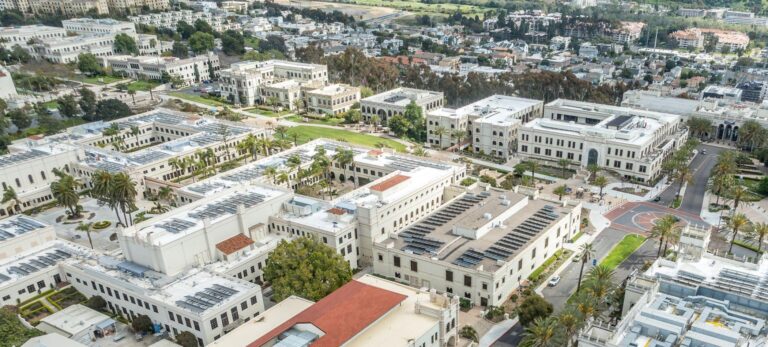In-Depth Study Illuminates Economic Synergies in the CaliBaja Region
The University of San Diego’s Ahlers Center for International Business has unveiled an extensive new report that delves into the economic interplay and growth trajectories within the CaliBaja region. Spanning Southern California and Baja California, this binational area is rapidly evolving into a vital nexus for trade, innovation, and industrial collaboration. The report offers critical perspectives for government officials, corporate leaders, and investors aiming to grasp the region’s shifting economic dynamics and capitalize on emerging opportunities.
Unpacking the Dynamics of Cross-Border Commerce in CaliBaja
This latest publication from the Ahlers Center provides a thorough examination of the trade flows and economic exchanges that define the CaliBaja corridor. It highlights how intertwined supply chains and evolving regulatory frameworks are fueling growth on both sides of the border. The analysis underscores the robustness of manufacturing sectors, the modernization of logistics networks, and the growing role of technology in facilitating smoother trade operations.
Key takeaways include:
- Steady Trade Expansion: Bilateral trade has surged by an average of 7% annually over the last half-decade.
- Leading Industries: The automotive, aerospace, and medical device sectors dominate export-import activities.
- Infrastructure Improvements: Upgrades at border crossings have cut wait times by nearly one-third, enhancing efficiency.
| Economic Indicator | San Diego County | Baja California |
|---|---|---|
| Annual Trade Volume | $45 Billion | $37 Billion |
| Manufacturing Workforce | 120,000 Employees | 98,000 Employees |
| Border Crossing Efficiency | 85% | 80% |
Emerging Sectors Fueling Binational Economic Integration
The report identifies several high-growth industries that are pivotal in strengthening economic ties between California and Baja California. Notably, cutting-edge manufacturing, renewable energy development, and enhanced cross-border logistics are driving innovation and job creation. These sectors benefit from the region’s strategic location and skilled labor force, fostering technology exchange and boosting the CaliBaja area’s global competitiveness.
Recent data highlights significant investment inflows, rising export volumes, and infrastructure expansions aimed at optimizing trade flows. Specific sector insights include:
- Cutting-Edge Manufacturing: The fusion of automation and Industry 4.0 technologies with traditional production methods.
- Renewable Energy: Accelerated deployment of solar and wind projects, attracting multinational collaborations.
- Cross-Border Logistics: Development of transport corridors and distribution centers to enhance supply chain agility.
| Sector | Annual Growth Rate | Employment Impact |
|---|---|---|
| Cutting-Edge Manufacturing | 8.5% | +3,200 Jobs |
| Renewable Energy | 12.3% | +1,800 Jobs |
| Cross-Border Logistics | 9.7% | +2,400 Jobs |
Infrastructure and Workforce: Critical Challenges to Address
Despite promising growth, the report highlights significant hurdles related to infrastructure and labor force readiness that could impede the region’s economic potential. Aging transportation systems contribute to bottlenecks in cross-border trade, while a shortage of qualified workers threatens the sustainability of expanding industries. The slow pace of modernization in sectors such as logistics, energy, and telecommunications poses risks to maintaining competitive advantages.
Workforce development is hampered by gaps in education and limited access to specialized training programs. The report advocates for enhanced collaboration between public and private sectors to bridge these gaps through initiatives such as:
- Industry-specific vocational training programs aligned with regional economic needs
- Expanded STEM education and apprenticeship opportunities to cultivate future talent
- Cross-border partnerships to optimize the utilization of the available labor pool
| Infrastructure Element | Current Condition | Impact Severity |
|---|---|---|
| Road and Highway Networks | Obsolete with frequent congestion | High |
| Energy Infrastructure | Unstable supply | Moderate |
| Workforce Training Programs | Insufficient availability | High |
Strategic Pathways to Foster Sustainable Binational Growth
To capitalize on the CaliBaja region’s potential, the report outlines strategic recommendations aimed at deepening economic integration and sustainability. Priorities include coordinated infrastructure upgrades, workforce development tailored to emerging sectors, and harmonized regulatory frameworks. These measures are designed to enhance the region’s appeal as a global innovation and trade hub while addressing environmental and social equity considerations.
Key proposed actions encompass:
- Joint expansion of transportation infrastructure to streamline supply chains
- Investment in eco-friendly technologies promoting clean energy and emission reductions
- Creation of binational education and vocational training programs aligned with industry needs
- Formation of a regional economic council to facilitate continuous policy dialogue and alignment
| Strategic Focus Area | Anticipated Benefits |
|---|---|
| Infrastructure Synchronization | Shorter transit times, reduced operational costs |
| Workforce Enhancement | Expanded skilled labor pool, increased employment |
| Regulatory Harmonization | Simplified trade processes, clearer legal frameworks |
| Environmental Stewardship | Lower carbon footprint, resilient ecosystems |
Conclusion: Charting the Future of CaliBaja’s Economic Integration
The Ahlers Center’s CaliBaja Regional Economy report delivers a timely and insightful evaluation of the binational economic landscape. As stakeholders navigate the complexities of this cross-border region, the findings serve as a crucial guide for shaping policies and business strategies that foster sustainable growth. The Center’s dedication to rigorous research continues to position it as an essential resource for understanding and advancing the economic partnership between California and Baja California.







